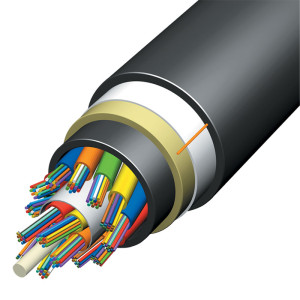
8 Network Cabling Mistakes to Avoid – Part 2
 As discussed in Part 1, the improper I can result in poor network performance, maintenance issues, and concealed expenses. Part 2 will discuss four more network cabling errors to avoid. Remember to consult with a cabling company that is experienced and provides excellent service.
As discussed in Part 1, the improper I can result in poor network performance, maintenance issues, and concealed expenses. Part 2 will discuss four more network cabling errors to avoid. Remember to consult with a cabling company that is experienced and provides excellent service.
Mistake No. 5: Ignoring Distance Limitations
The standard distance limitation for UTP cabling with Ethernet at 1 Gbps is 100 meters. For cabling used for 10 Gbps or 40 Gbps, it is important to be aware of the distance limitations of the kind of cabling that will be used. Let’s say your project plans to run 10 Gbps for a maximum of 100 meters over UTP cabling. This will require utilizing at least CAT 6A cabling.
Mistake No. 6: Bypassing Codes
Bypassing local codes may result in endangering first responders. In most facilities, it is prohibited to use PVC-jacketed cabling within air handling spaces. When PVC cabling burns, it produces poisonous fumes that can be hazardous to firefighters and other first responders who must enter the facility during an emergency.
The failure to comply with local codes with respect to low voltage cabling may result in costly fines and perhaps even being ordered to completely remove and reinstall cabling, an expensive exercise. Working with a reputable cabling service company that is knowledgeable regarding local ordinances will avoid future problems.
Mistake No. 7: Neglecting Testing
After cabling is installed, testing should be performed on every cable, using equipment that can verify functionality. The verification of cable lengths and specifications is also important. For certain transmission rates, it must be verified that the cabling is capable of adequately providing support.
Mistake No. 8: Non-Compliance with Standards
Your company’s project should comply with technical standards to ensure the proper functioning of its network. Non-compliance will make noise and interference more likely, leading to inefficiency and poor network performance.
Network cabling standards are used worldwide and are drafted by ISO/IEC, CENELEC and the Telecommunications Industry Association (TIA). TIA (USA) issues the ANSI/TIA-568 standards for telecommunications cabling in commercial facilities.
Progressive Office Cabling
Founded in 1986, Progressive Office’s success has been a direct result of years of commitment to seeking solutions on behalf of our clients in the Washington, D.C. and New York City areas. Efficiently working together, Progressive teams get cabling installed and operating as fast as possible while minimizing disruption and downtime. Call our toll free number (800) 614-4560 today.


 Whenever there is an IT systems issue, the resolution can often be delayed by poorly
Whenever there is an IT systems issue, the resolution can often be delayed by poorly 
 After their Milan working group meeting in 2015 regarding
After their Milan working group meeting in 2015 regarding